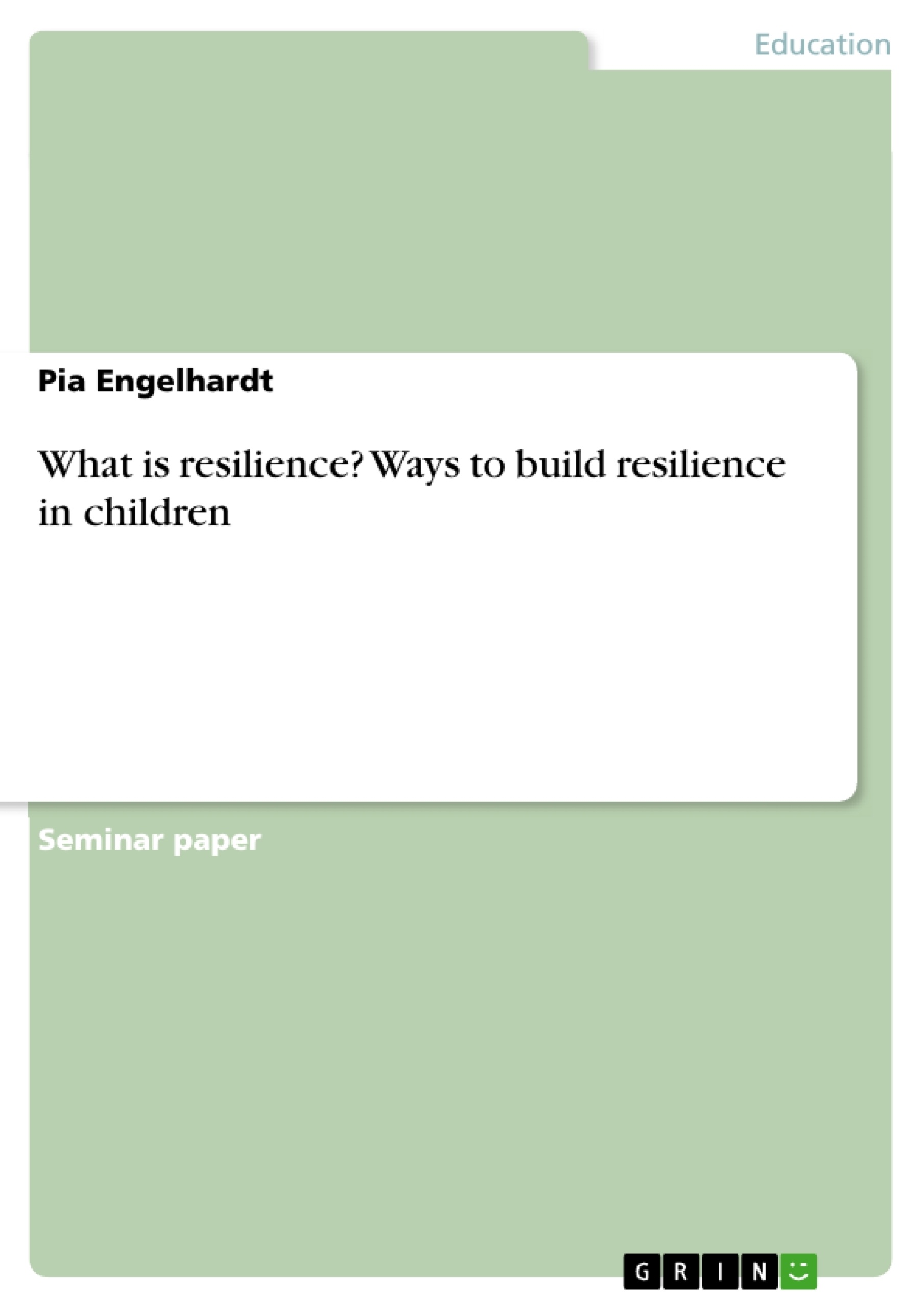The discussion on resilience and the current debate on the subject form the basis for the following paper, which is intended to show the extent to which educational measures in childhood can contribute to the promotion of resilience.
The first chapter provides an overview of the origin of the word and possible definitions, presents the current state of research and shows ways of acquiring the ability to develop resilience. In the second chapter, the various resilience models are presented, and then in the third chapter the findings are applied to educational measures for parents, schools and prevention.
Finally, the conclusion will clarify what contribution the concept of resilience can actually make to a child's healthy development and resistance to stressful life circumstances and life crises.
Inhaltsverzeichnis (Table of Contents)
- Introduction
- What is resilience?
- Possible definitions
- Resilience research
- Acquiring resilience
- Concepts and models from resilience research
- Protective and risk factor concepts
- Compensation model
- Challenge model
- Interaction model
- Cumulation model
- Educational measures to promote resilience
- Resilience-promoting orientation of parents
- Resilience development in the context of schools
- Prevention and resilience
- Conclusion
Zielsetzung und Themenschwerpunkte (Objectives and Key Themes)
This seminar paper aims to explain how pedagogical measures in childhood can contribute to the promotion of resilience. It investigates the origins and definitions of resilience, explores current research on the topic, and examines various models of resilience development.
- Defining and understanding the concept of resilience
- Exploring the development and acquisition of resilience
- Analyzing different models of resilience, including protective and risk factors
- Examining the role of education in fostering resilience in children
- Evaluating the impact of pedagogical measures on resilience development
Zusammenfassung der Kapitel (Chapter Summaries)
- Introduction: This chapter introduces the topic of resilience and provides context for the seminar paper. It outlines the objectives and structure of the work, highlighting the importance of pedagogical measures in promoting resilience in children.
- What is resilience?: This chapter explores the origins and possible definitions of resilience, drawing on various sources, including definitions by Rutter, Bender/Lösel, and Welter-Enderlein. It clarifies that resilience is not a fixed personality trait but a skill developed through interactions with the environment.
- Acquiring resilience: This chapter focuses on the concept of resilience research and its focus on resources and protective factors. It presents various models of resilience, including the compensation model, the challenge model, the interaction model, and the cumulation model.
Schlüsselwörter (Keywords)
Key terms and concepts explored in this seminar paper include resilience, protective and risk factors, resilience research, salutogenesis, pedagogical measures, childhood development, and stress management. The work examines the contribution of education and parenting to the promotion of resilience in children, highlighting the importance of supporting healthy development and coping strategies.
- Quote paper
- Pia Engelhardt (Author), 2010, What is resilience? Ways to build resilience in children, Munich, GRIN Verlag, https://www.grin.com/document/1156919



